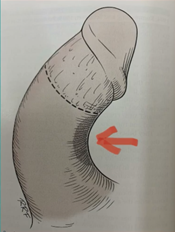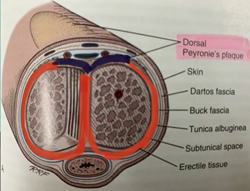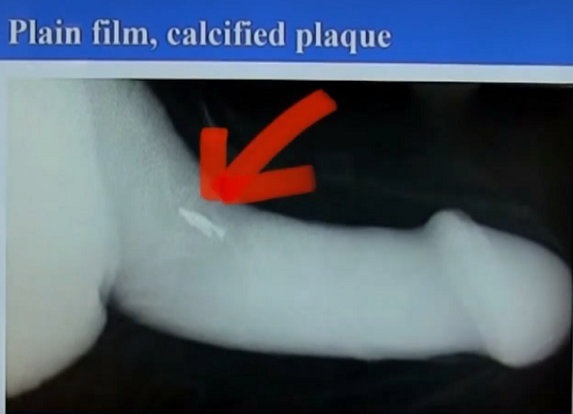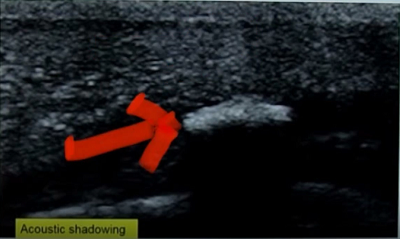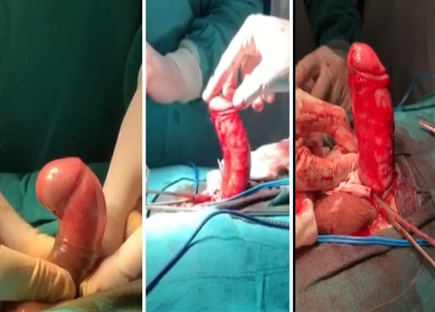Peyronie's disease treatment in New delhi India| Options and cost
On this page, read all about Peyronie’s disease and its treatment options available in New Delhi, India. Also know about the Peyronie’s disease treatment cost in New Delhi, India.
Is Peyronie’s disease common ?
Yes, Peyronie’s disease is a very common condition. 15% of the population in the world suffers from Peyronie’s disease or bent or curved penis. The main reason why patients are not aware about this problem is that, not many people talk about it. If you go to a bar, you will talk about your girl friends or your gym or bodybuilding or movies , but nobody will tell their friends that their penis is curved !
What is Peyronie’s disease?
In Peyronie’s disease the normal penile tissue is replaced by fibrous scar tissue. Because of this , when we feel the penis, there is a stony hard area over the penis, like a nodule.
What are the symptoms of Peyronie’s disease?
Normally, the penile tissue is very elastic and expands well at the time of erection. In Peyronie’s disease, the normal elastic tissue is replaced by fibrous scar tissue and this leads to the following symptoms:
- A hard nodule is felt over the penis,
- Pain during erection
- Curved or bent penis because the penis does not expand uniformly.
- Difficulty in achieving an erection and they suffer from erectile dysfunction
What is the normal penile curvature?
The normal penile curvature is less than 20°. If the penis bend is less than 20° , then there is no problem in having intercourse.
If the penis curve is more than 20°, then there can be difficulty in penetration while having intercourse or patient have pain while having intercourse and it is uncomfortable for both the partners.
If there is penile curvature, patients also suffer from psychological trauma, because the penis shape does not look good.
What is Congenital Penile curvature?
In some young patients the penis is curved naturally that is , from birth.
They do not suffer from Peyronie’s disease, but they suffer from congenital penile curvature or CPC. These patients will have a curved penis with a curvature ranging from 10° to as much as 80 to 90 ° but they do not have any nodule of the Peyronie’s disease ( Peyronie’s plaque).
Usually these patients have normal erections and the only symptom is a curved or bent penis.
So, patients with congenital Penile curvature often suffer from curved or bent penis with pain during intercourse or erection. They do not have a hard nodule and usually do not suffer from erectile dysfunction.
How does Peyronie’s disease happen?
The main cause of Peyronie’s disease is micro trauma to the penis. When there is minor repeated trauma, which will lead to minor bleeding. Under normal circumstances, this blood clots and the wound heal. But in some people, there is an abnormal collagen in the body that is the type III collagen, which causes excessive fibrosis during healing. This leads to the formation of hard fibrous nodule or Peyronie’s plaque in Peyronie’s disease.
The Peyronie’s plaque forms in the tunica albuginea layer of the penis. The elastic tissue of the tunica albuginea is replaced by the fibrous plaque.
Normally when the erection happens, the tunica albuginea expands uniformly in all directions to give a straight and hard erection.
But in Peyronie’s disease, the elastic tunica albuginea is replaced by the fibrous tissue in some areas. So, in this condition, when the erections take place, the penis does not expand uniformly and patient may suffer from a bent penis or a curved penis or there can be painful erections or pain during intercourse or in severe cases, there can be erectile dysfunction.
What are the causes of Peyronie’s disease?
- 1. Excessive masturbation or rigorous sexual intercourse
- 2. Shockwave therapy for erection or Penile injections.
- 3. Prolonged catheterisation or Urological procedure. The prolonged catheterisation can cause pressure in the urethra and can start inflammatory reaction, which will lead to abnormal wound healing and Peyronie’s disease formation.
- 4. Prostate cancer surgery: During the radical prostatectomy, there is a vein on the prostate known as the deep dorsal vein which we ligate to reduce the bleeding during the surgery. It is believed that the back pressure from the blocked vein causes acute inflammatory response and development of Peyronie’s Plaques.
- 5. Diabetes : Diabetic microangiopathy can cause urethritis and corporeal inflammation leading to development of Peyronie’s plaques.
- 6. Dupuytren's contracture: people suffering from this problem have disorder of collagen formation.
How is Peyronie’s disease diagnosed?
- 1. The history of curved or bent penis at the time of erection.
- 2. Physical examination: the hard fibrous plaque is formed and is palpable on physical examination
- 3. X-Ray of the penis: Peyronie’s plaque is identified
- 4. Penile Doppler Ultrasound Test: In this test, we can see the fibrous calcified plaque on Ultrasound. This test also helps in identifying the blood supply to the penis. So, if a person is suffering from a Peyronie’s disease and erectile dysfunction , then, with this test, we can know , if there is any problem in the blood circulation of the penis.
Is Peyronie’s disease permanent ?
The Peyronie’s disease progresses through 2 stages :
- 1. Acute stage: This is in the initial 6 to 12 months of the disease. The patient starts to feel a small plaque which is gradually increasing, or patient starts to have pain in the penis or a bend in the penis. During this acute phase we give the patients medicines to reduce the inflammation and the pain. We also give medicines to improve the blood supply of the penis. There is no role of surgical treatment in the first 6 to 12 months. During this first 6 to 12 months the plaque may increase in size or remains stable or reduces in size. Studies have shown that most of the people with Peyronie’s disease will persist. Spontaneous resolution of the plaque happens in only 3 to 13% of the cases. After the acute phase, the disease goes into the chronic phase.
- 2. Chronic stage: Usually after one year, the pain resolves and then the disease has gone into the chronic phase. Whatever the residual disease in the chronic phase, in terms of size of the plaque or the bent in the penis , this stays stable. This means that in the chronic phase, usually the plaque or deformity will not increase in size and they might or might not reduce in size. Since there is no pain during this phase, many patients don’t mind the plaque or the bend. But in some patients the plaque is very big , or the bend is severe, or the patient is having erectile dysfunction. So, in all these conditions when the Peyronie’s plaque is causing a problem, patients will need the treatment.
Is Peyronie’s disease curable?
1. Medical treatment for Peyronie’s disease:
- 1. Potaba: blocks inflammation
- 2. Colchicine
- 3. PDE5 innovators like Viagra and Cialis: These medicines improve the blood supply to the penis and assist in elections and reduce the inflammation.
- 4. L arginine: An amino acid which releases nitric oxide and improves the blood supply to the penis. Reduces inflammation
- 5. Vitamin E : Reduces inflammation
- 6. Pentoxifylline: Inhibits new scar tissue formation in the penis. None of these medicines are USFDA approved for treatment of PyD
2. Intra-lesional therapy: ( injecting the medicine directly into the plaque)
- 1. Verapamil: It is a calcium channel blocker so theoretically, as the plaque has got calcium in it, if we inject the verapamil into the plaque, the plaque can soften up. But practically it has not been found to be very effective. It is not USFDA approved for treatment of PyD.
- 2. Interferon: It is an anti-viral agent and it has also got anti-inflammatory properties. But it is a painful injection and some people can develop flu like symptoms after the injection. It is not USFDA approved for treatment of PyD.
- 3. Collagenase: ( Xiaflex - Collagenase clostridium haemolyticum ). It is the only agent that is USFDA approved for treatment of PyD. It is currently not available in India. This is an enzyme derived from the bacteria and it is supposed to dissolve the collagen when we inject it directly into the plaque.
3. Surgical Treatment of Peyronie’s disease:
Indications for surgery in Peyronie’s disease:
- 1. Penile Curvature or bent penis more than 20 degree or causing difficulty in intercourse.
- 2. Erectile Dysfunction, not responding to medicines
Types of surgery in Peyronie’s Disease:
1. Plication:
This surgery is done in case of patients with Peyronie’s disease with no ED or congenital Penile curvature.
In this surgery, we deglove the penis and create an artificial erection , so that we know the exact degree of bent of the penis. After that we identify the neurovascular bundle of the penis and expose the tunica albuginea layer of the penis. We place sutures with non-absorbable material ( 3-0 or 4-0 proline) at the level of the maximum curvature of the penis on the side opposite the curvature. Usually 6 to 8 sutures are placed, and this straightens the curve of the penis.
Peyronie’s disease before and after plication surgery pictures:
2.Plaque Excision and grafting:
If there is extensive Peyronie’s plaque, then this plaque is to be excised and if you do not close the Tunica albuginea defect, then patient will start having Erectile dysfunction . So, we put graft of tissue to fill up the exposed area of tunica albuginea tissue and close it up.
Many materials are used for this grafting like:
- Human pericardium (tutoplast graft ),
- porcine small intestine ,
- patient’s own tissue (temporalis fascia , buccal mucosa).
The problem with plaque excision and grafting is:
- It is a complicated procedure and there are chances of damage to the neurovascular bundle. This causes a reduction in blood supply to the penis and numbness of the penis.
- The other problem is that the quality of graft which you put . There is no graft which is ideally suited to replace the normal tunica . The normal tunica albuginea is very elastic. None of the materials that are available are as elastic as a naturally occurring tunica albuginea, so when the elasticity is reduced, there can be problem in erection.
3.Penile implant and Modelling :
If you suffer from Peyronie’s disease with a bent penis along with erectile dysfunction, then the best treatment is Penile Implant with modelling. The Penile Implant will take care of erectile dysfunction and the modelling will straighten up the bent penis.Can Peyronie’s disease be cured naturally ?
The principal of treating PyD is to maintain the blood flow into the penis, keeping the penis healthy and This can be done naturally by reducing the cholesterol , maintaining the blood pressure, keeping the diabetes under control , not smoking and exercising regularly.
Should I get operated when there is pain in the Peyronie’s disease ?
The presence of pain in Peyronie’s disease indicates the acute phase of disease. During this phase, the only treatment is by medicines.
At how much degree of curvature should I operate?
The penile curvature causes Physical as well as psychological problems.
- Physically, if the curvature is more than 20° and patient is having pain during intercourse or is unable to perform the intercourse then you should go for surgery to straighten the penis.
- Penile curvature also effects psychologically. So, if the patient is very troubled by the bent penis and he feels disturbed and uncomfortable due to the appearance of the penis due to the curvature then we can do the surgery and make the penis straight.
Is Peyronie’s disease deadly condition?
No , Peyronie’s is not a deadly condition. Spontaneous resolution of the plaque happens in 3 to 13% of the cases. 80% patients do not need any treatment. Surgery is required in only 10% patients who suffer from severe disease leading to excessive bent or severe erectile dysfunction with patient unable to have penetrative intercourse.
Which doctor treats Peyronie’s disease?
Peyronie’s disease is treated by super specialist Urologists, who has special interest in diagnosis and treatment of penile disease. Dr Ashish Sabharwal at Blue ribbon prostate clinic in New Delhi, India, is one of the most experienced doctors who sees patients of peyronie’s disease and regularly treats them. He sees at least 2-3 patients of Peyronie’s disease every day in OPD. So, if you are suffering from Peyronie’s disease, then contact us immediately and we will guide you in the best possible way.
Peyronie’s Disease Treatment Cost in New Delhi India
The most affordable Peyronie’s disease treatment is available in New Delhi India. The costs are indicative. Contact us for more detailed quotes.
| Modality | Cost (INR) | Cost (USD) |
| Surgical Correction (Plication/ Excision & Grafting/ penile implant with modelling ) | 150000-175000 | 3000 |
| Penile implant cost extra | 35000 to 700000 | 500 – 9000 |

